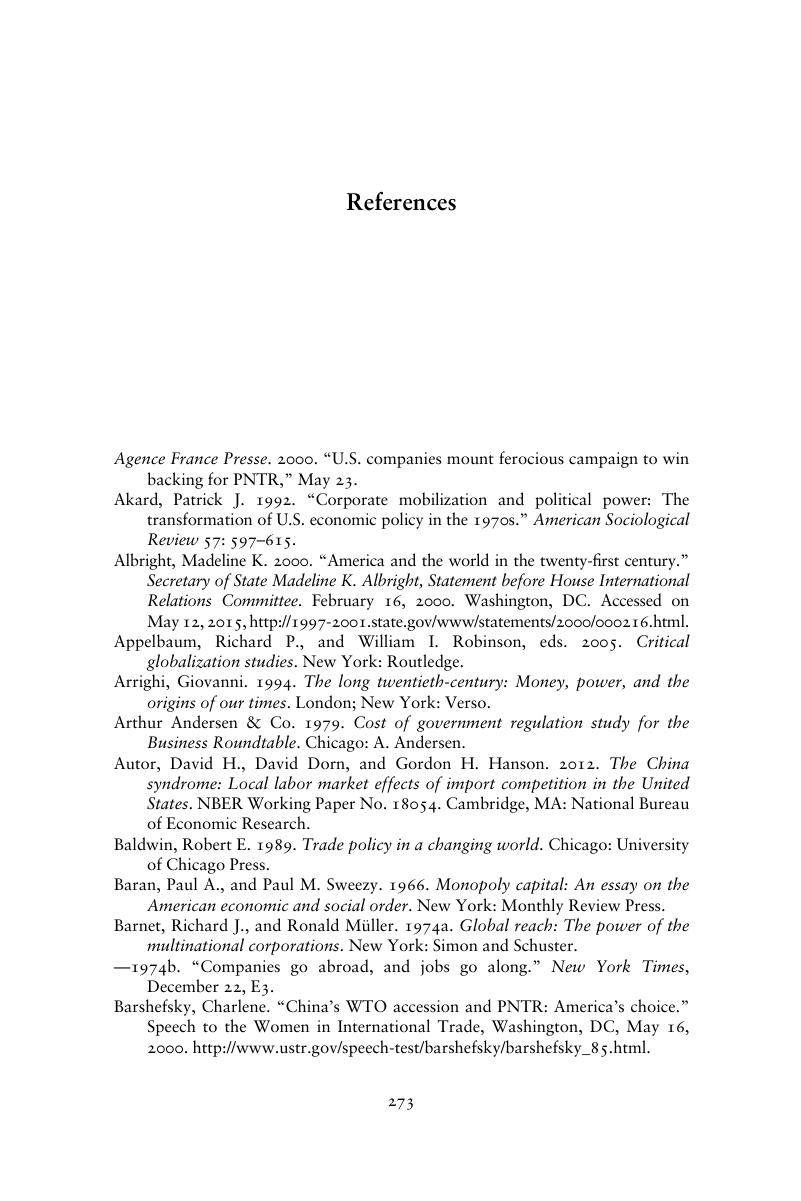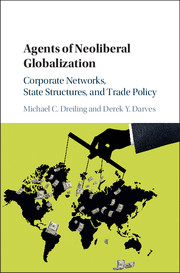Book contents
- Agents of Neoliberal Globalization
- Agents of Neoliberal Globalization
- Copyright page
- Dedication
- Contents
- Figures
- Tables
- Acknowledgments
- Common Abbreviations
- 1 Introduction
- 2 Corporate Political Unity and Class Agency
- 3 A Critical Sociology of US Trade Policy
- 4 Forging a Neoliberal Trade Policy Network, 1967–1994
- 5 Inside the State: Corporate Participation in Trade Policy
- 6 Fusing Class Agency to a State Trade Policy Apparatus
- 7 Conclusion: Agents of Globalization
- Book part
- References
- Index
- References
References
Published online by Cambridge University Press: 11 October 2016
- Agents of Neoliberal Globalization
- Agents of Neoliberal Globalization
- Copyright page
- Dedication
- Contents
- Figures
- Tables
- Acknowledgments
- Common Abbreviations
- 1 Introduction
- 2 Corporate Political Unity and Class Agency
- 3 A Critical Sociology of US Trade Policy
- 4 Forging a Neoliberal Trade Policy Network, 1967–1994
- 5 Inside the State: Corporate Participation in Trade Policy
- 6 Fusing Class Agency to a State Trade Policy Apparatus
- 7 Conclusion: Agents of Globalization
- Book part
- References
- Index
- References
Summary

- Type
- Chapter
- Information
- Agents of Neoliberal GlobalizationCorporate Networks, State Structures, and Trade Policy, pp. 273 - 288Publisher: Cambridge University PressPrint publication year: 2016



